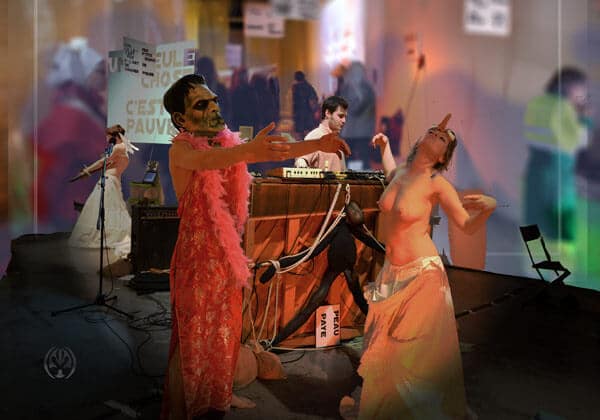"Do not crawl! That is the law" | The Island of Dr. Moreau - H. G. Wells | 1896
The feeling of betrayal was one of the first to form in me
Betrayal is one of the most intimate moods one can feel
It is based on two strong foundations in the construction of the individual: the legitimacy of being and the need for naive confidence in others, friends, companions, partners. Growing up is as much about learning to discern, to be respected, to respect oneself, as it is about learning to distrust.
Pinocchio, Mowgli, Peter Pan, the future King Arthur in Merlin... for those of my generation and the previous one (I'm talking here specifically about boys and their construction), Disney had the nose and the talent to synthesize in simple images the thoughts of complex authors, to deliver us the lessons. Lessons particularly well retained as far as I'm concerned; background themes for a whole life to come.
It is regrettable that, although fundamental, they have been oversimplified by the prism of popular culture - commercial, we should say, in this case - but we cannot deny the effectiveness of their transmission through fiction and animated images. The psyches of my Western contemporaries were thus scarred for life, although, to put it briefly, the scars left were later tempered, the brains reshaped, by the reading of the original myths, then by the punk culture and that, still dominant today, of derision.
The questions of family life, of the quest for true friendship and of surpassing oneself were thus raised. Righteousness, choice, the given word, the notion of community and sharing became the heart of my concerns. Strangely enough, love was not. Contrary to the publicity surrounding the great Disney cartoons and the idea that the world has of them, love is not a substantive subject in these stories with a universal vocation. Too adult, too sexual, the act of loving, apart from the love of parents, is only an anecdote in these scenarios; often a pretext. Since they were aimed at a child audience, desire was not on the agenda, since it had to be assumed that they were devoid of it. The Disney productions of the heyday, when the monopoly of translating tales into cartoons was vested in the firm, did not feature the couple, which remained a dream "off screen". There are girls' films and boys' films, each taking one or the other sex as hero or heroine and holding on to this choice from one end to the other, without ever fundamentally exposing the course of their romance. If there are exceptions to the rule, it is then embodied by animal figures that the duos are formed and exposed (Beauty and the Tramp, The 101 Dalmatians, The Aristochats).
Among the great subjects treated, being an only child, sharing had in my case a preponderant place. What other way is there to propose to others the desire for a faithful friendship?
Sharing implies putting in common a part of oneself or estimated as such, in all confidence. But what could define the limits of oneself, of one's sensitive heart, of one's affects, in a way that was understandable and unequivocal for the one who was not oneself? It is in the vibration of one's own uncertain contours that the germ of possible betrayal would be lodged. To make oneself understood intimately, to deliver the instructions for use of the high-risk zones likely to cause wounds, always amounts to mapping one's person a little further than the visible body. It is easy to make people understand that such and such a gesture towards one's skin, organs and limbs hurts here or there. Except for a deliberately sadistic mind that reveals itself through a behaviour recognizable by all, no one thinks of denying the physical pain that he inflicts on the other. The wounds of the body are undeniable. The same cannot be said of those that damage the psyche.
To be on the safe side, and with less controversy, societies are wont to consider that life's unfortunate experiences "shape us". It is the apparent vagueness of their definition that seems to impose this observation. The relativity of points of view is then invoked to soften the reality of what is True. Truth is relative, we are told. That of acts is already less so, but it is customary to oppose them with "the context". Thus abuse is born, deplored by everyone and supported by all, even and even more so, within tightly knit groups.
In extreme cases, the recourse is the Law, which, poor in this area in our country, is reluctant to set precedents without the establishment of concrete facts. Only psychoanalysis prides itself on dealing with the damage caused to the individual by psychological abuse, by micro betrayal, so invisible to the eye, but so strongly felt that it takes years to express its substance, to draw its contours. Only this discipline, which, because of its subject matter, can only claim to be a pseudo-science, has attempted to equip itself with the appropriate means to render justice to the unfortunate ones who have been scorned in their innermost being. In spite of its immense imperfections, I am grateful for the support it provides and for its paltry tools. One can only regret that it acts as a healing balm later in life and not as a defensive shield from an early age.

So what is left as possible avenues of recourse for those whose choice to remain sensitive despite destructive adventures always makes them vulnerable to the pettiness, manipulation, unconsciousness or negligence of others?
If we exclude the renunciations which, in my opinion, represent the fact of hiding one's pain and humiliations or of deciding to ignore them by telling ourselves that we cannot control everything that happens to us, I can hardly see that the only ways to respect oneself are through pedagogy or by fighting foot to foot.
The first, tedious and endless, can only concern a circle of close friends, sufficiently loving and patient to want to understand you; the famous friends, whose mobile and slippery place undulates according to the behaviours of circumstances that hurt or soothe.
The second, the path of struggle, is the only one that in my opinion generates the respect so sought after in return. But this implies that the fight be moderate; that the blows be restrained, to ensure that they do not in turn generate deep wounds; that the defense of one's territory does not become unjust punishment by excess. One could also invoke artistic expression, writing, performing, composing, painting. For me, these are only outlets that imply that in order to make oneself heard, one must feed the other all the more. So which of the two really comes out of this battle enriched?
Only widespread recognition leads to mass respect, as well as criticism. The two balance each other out, but the power remains with the person who shines. It is a bonus linked to notoriety which one must have the taste to use. This notoriety itself never seems to be a given, and its intelligent maintenance is certainly exponential, but it requires a flash in the pan or a cleverly constructed artistic longevity which the artist alone does not possess all the keys to. He must then rely on the successes obtained step by step within the milieu in which he operates in order to secure the foundations of an authority, later undisputed.
A mix, constantly re-dosed, between struggle and pedagogical elements, seems to be the only honest defensive weapon (in the sense: not "political") to live and work relatively calmly in the company of others and to face their solicitations.
The law of my physics
It is no longer a question of talking about the disappointment that comes fatally from the destroyed dream of being loved without compensation. For me, the subject was, if not dealt with, at least largely traversed in my previous works with my partners (The Puritans, The Innocents). My current subject is the conquest (by which I mean the relatively modest conquest of myself) and the consolidation of what I have achieved.
Don't lose anything - not a minute, not the smallest prop in the game - unless the "risk" invested is justified by a potential return.
In the world of economics and business, we say "return on investment".
I have no difficulty today in looking at my life as a wealth that should be exploited in a coherent way and not squandered in dubious sharing. The study of the partners of this unusual market, which has attracted me since childhood, leads to the "professionalization of friendship" and the works that result from it. It must be carried out with an electronic microscope and leave no shadowy area or side, out of weakness or complacency. This particular niche is, in my vision, the very crucible of the theatre company and of any crew destined for great crossings. It is a project in itself. I could even say that it is the source of what will happen on stage. To conjure up an image of the Spirit of Work is a totemic challenge.
One of the difficulties I have often encountered in my work with teams is to make them understand the flexible nature of the margin that separates military rigidity, simply referred to as a hierarchical order, and the latitude offered to encourage each person's creative autonomy. In some cases, rigour is taken as a watchword that authorises no surrounding discussion; in others, the relative permissiveness of the project is interpreted as an authorisation to "unpack" one's personal emotions, far removed from the anchoring of the desired work and its necessities. The profession of interpreter faced with a living author and creator of the form of his works requires at least as much subtlety as it takes for the members of a symphony orchestra to render a contemporary work. Here we come up against the complex and unresolved problem of the notation of intentions when it is no longer enough to obtain moods, gestures, phrases and sounds by simply performing their transcription.
Directing is a personal talent much more than an art, and there can be no other way of dealing with performers than to make oneself known in a human way in order to be understood artistically. I have therefore given up any desire to obtain precise scenes, except in the context of filming, unless one day I have the colossal material and vital means that I would need to achieve an execution that is not crude, due to the number of factors that need to be dealt with on the whole set.
This is where the notion of "guided improvisation" comes fully into play, with its considerable creative contribution, its freedom of tone and the saving of face-to-face work with the performer. However, it is necessary to have a good mutual knowledge and a sufficient number of common experiences to link him to the author-director and his universe. We are working on this.











"He who meditates lives in darkness; he who does not meditate lives in blindness. We have only the choice of darkness. "
of Victor Hugo